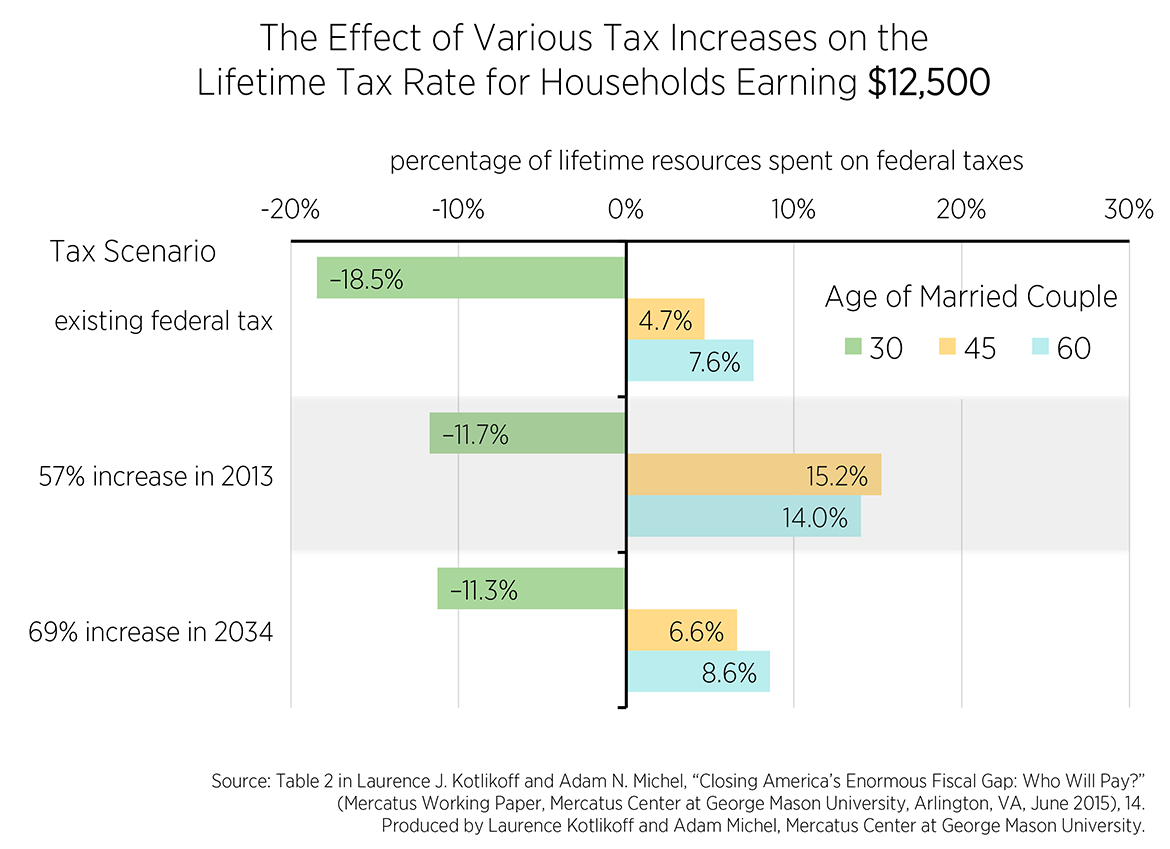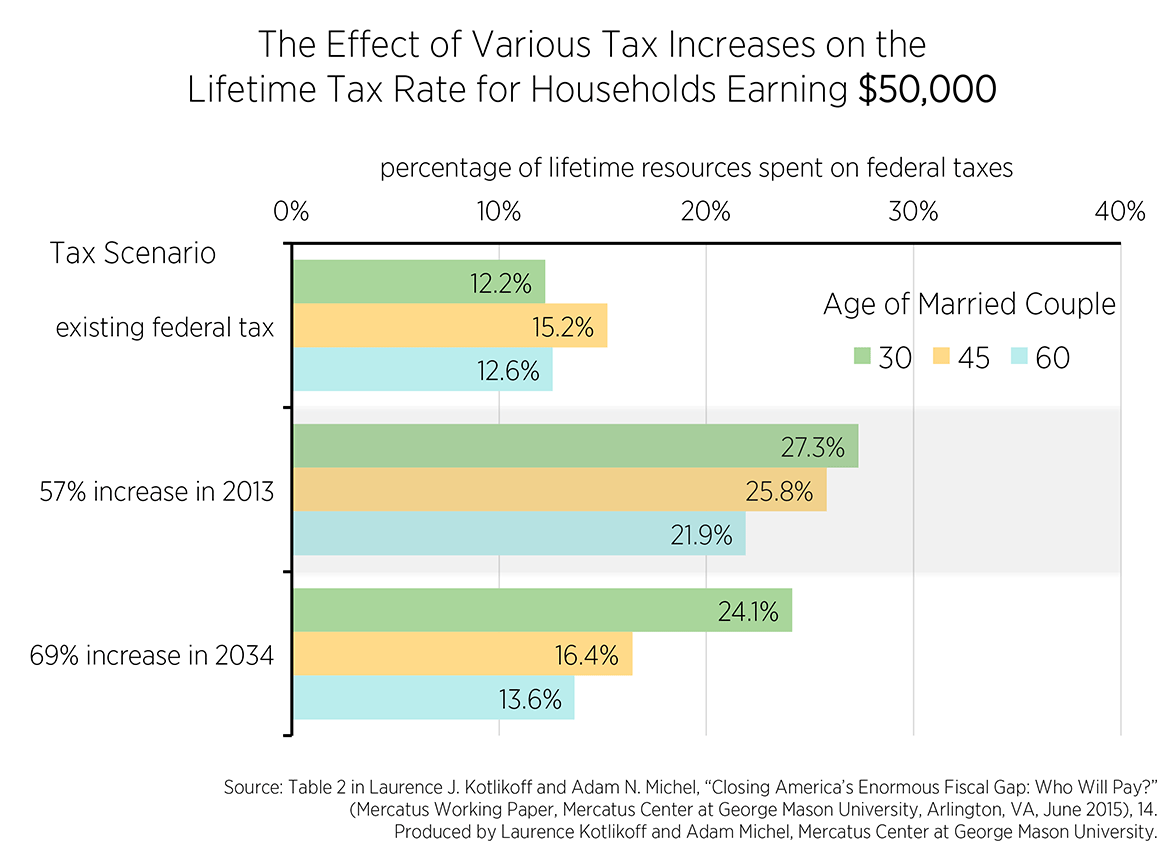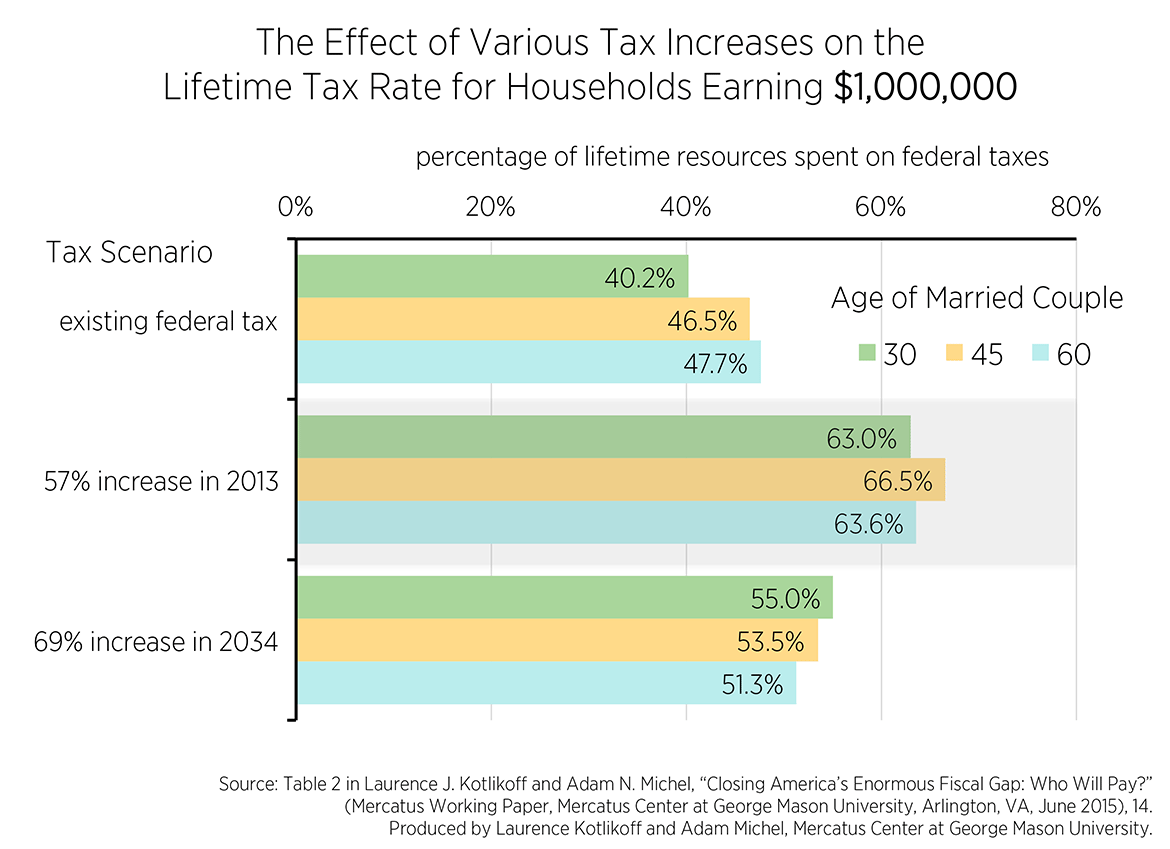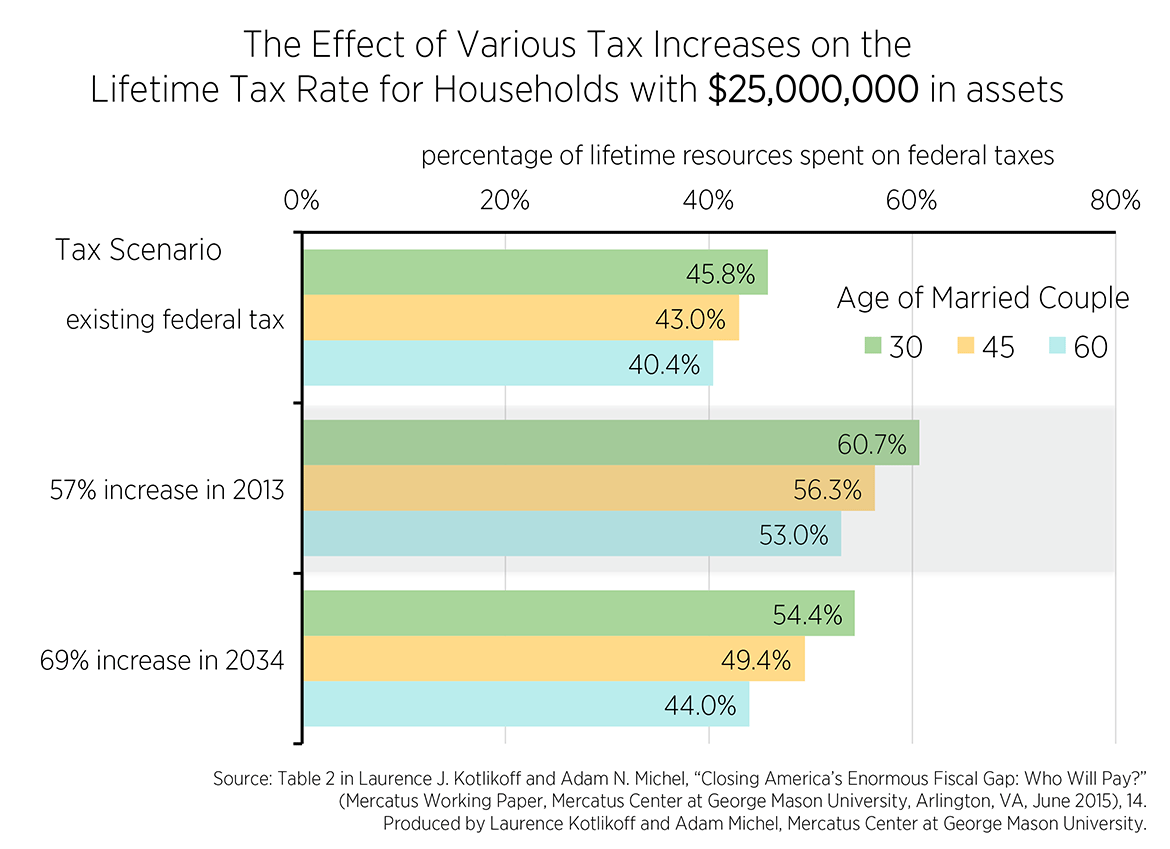- | Government Spending Government Spending
- | Data Visualizations Data Visualizations
- |
Closing the True Fiscal Gap with Tax Increases: How Much Will Your Family Pay?
This week's charts compare the lifetime tax rates of couples in five different income brackets at three ages and for three separate tax scenarios: the current tax regime, a 57 percent tax increase in 2013, and a 69 percent tax increase in 2034. As the charts show, increasing federal taxes would raise each family’s lifetime tax rate and decrease each family’s lifetime spending. Delaying the tax increase would lower the burden on current taxpayers, helping the elderly now but shifting the tax bill onto future generations.

The true size of the federal government’s fiscal gap is $210 trillion. That’s 16 times the $13 trillion that the government reports on its official books, and 12 times the current GDP. New research from the Mercatus Center at George Mason University contextualizes the impressive size of the true fiscal gap by showing what individual American families will pay for years of unfunded federal spending.
The current method of tabulating government debt dramatically underestimates the government’s actual future liability. Most government debt is kept off the books because it is labeled as something else. The discrepancy between the official government debt of $13 trillion and the true $210 trillion fiscal gap exists because the official figure improperly accounts for future unfunded liabilities in programs like Social Security, Medicare, and federal employees’ retirement plans.
In 2013, closing the true fiscal gap using tax increases alone would have required an immediate and permanent 57 percent increase in all federal taxes. Since 2013, government debt has continued to grow, and closing the even larger fiscal gap using the same method would now require a 58 percent tax increase. The following charts depict how closing the 2013 fiscal gap with tax increases would affect five stylized American families, causing a dramatic increase in their lifetime tax rates.
The charts compare the lifetime tax rates of couples in five different income brackets at three ages and for three separate tax scenarios: the current tax regime, a 57 percent tax increase in 2013, and a 69 percent tax increase in 2034. As the charts show, increasing federal taxes would raise each family’s lifetime tax rate and decrease each family’s lifetime spending. Delaying the tax increase would lower the burden on current taxpayers, helping the elderly now but shifting the tax bill onto future generations.
The alternative to tax increases is a cut in all federal spending (apart from servicing official debt) by 38 percent, starting today and continuing forever. Neither tax increases nor spending cuts are desirable. But, to the extent political pressures make spending cuts infeasible, closing the fiscal gap with tax increases alone will harm every American.
No fiscal adjustment that sufficiently addresses the fiscal gap will be small. Even a 6 percent tax hike could materially reduce a household’s welfare. Ultimately, it will take some combination of both tax increases and spending cuts to address the burgeoning US debt.






